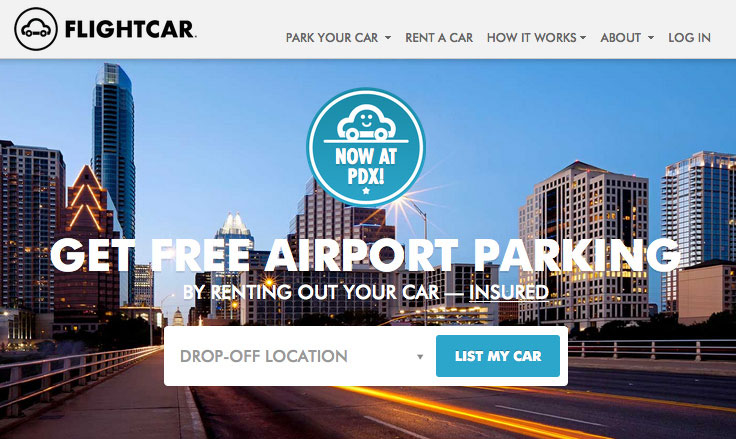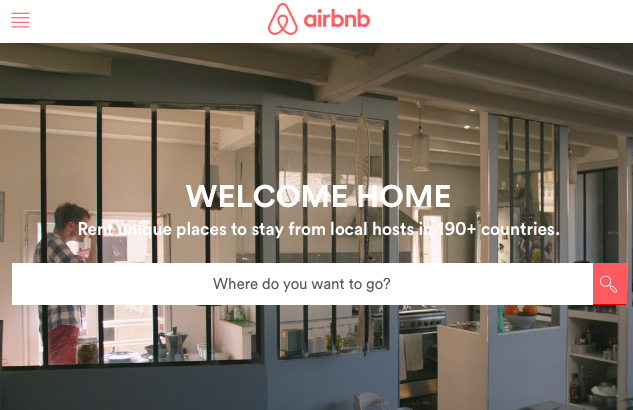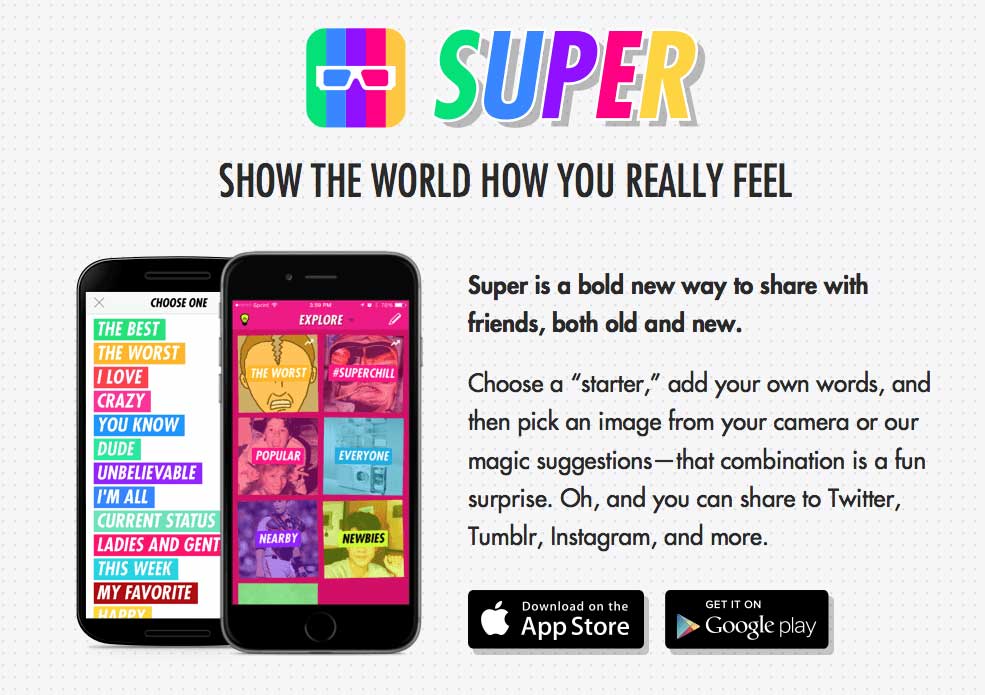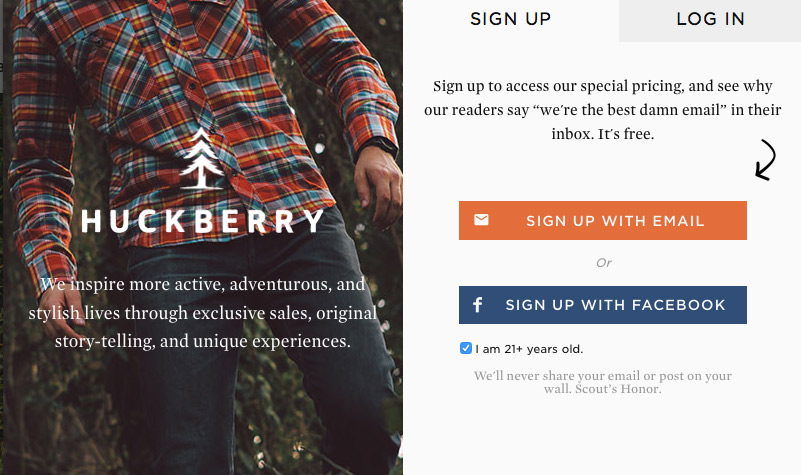How great startups build brands with the right words
It’s your chance to define who you are and what you do. This could be any marketing assets ranging from the headline and images on your website to advertising
Your marketing message is often the very first communication between you and a potential customer, which is why it’s so important to nail your first impression. It only takes 50 milliseconds for users to make a judgment about you and your product.
It’s your chance to define who you are and what you do. This could be any marketing assets ranging from the headline and images on your website to advertising.
The Two Big Mistakes that Startups Make with Messaging
Countless companies miss the mark with their primary marketing message. There are two big pitfalls that these companies fall into.
Mistake 1: The “Brand” Message
You may want to be like Apple with “Think Different” or like Nike with “Just Do It”. That works for big brands with huge market penetration and mindshare, but it can be damaging to a startup trying to make it onto the map.
Mistake 2: The Explanatory Message
Explanations are important; technology can be complicated. However, completely explanatory messages are uninspired. They certainly CAN drive brand awareness and if you've invented something completely new like cloud storage, just announce it and people will show up… until there’s another player in the game. People buy because of emotion and justify that emotion with rationalizations.
The 4 E’s Messaging Framework
Let me say that I think acronyms are hokey but they actually do help people remember each step. I want to begin by providing a useful framework for building your primary messaging for your startup.
This is the framework that is taught in the Growth Track at Tradecraft, by the Head of Growth Marketing, Graham Hunter. It consists of four parts, easily remembered as the four E’s.
- Explain
- Emotion
- Evoke Questions
- Exclude/Include
Not every message will have all of these elements. In fact, it can be extremely difficult to get all of them into one message. I like to think of it as an RPG game. You are allocated a certain number of points and can distribute them across these 4 elements depending on your situation.
So, which elements should I focus on? It depends on the stage of your company.
Graham generally lays out 3 stages that companies go through when they grow.
Awareness Messaging
The first stage is for early stage companies trying to drive awareness and establish their place in the market. An example of a company in this stage is FlightCar.

Brand Marketing Messaging
Mature companies with existing brand awareness reside in stage two, which could be called Brand Marketing and are constantly reiterating their message to drive affinity and stay top of mind.
Take for example Airbnb.

Most people know about this company and what it does, and there’s a good chance they're an Airbnb user. There’s little need for an explanation at this point in the message.
Campaign Based Messaging
The third stage is campaign based messaging for companies who have successfully earned a place in the consumer’s mind.
How many times can Nike say “Just Do It” before you say OK, OK, I get it? Eventually they turn to campaign based messaging to communicate some of these similar ideas in new ways. For example, you might see a shirt that says “RUN LIKE HELL” followed by the swoosh. People get it; Nike is all about determination and this demonstrates that.
So, which stage does your company fall into? Keep this in mind when looking at each part of the 4E’s framework.
1. Explain: What is it?
The first element – tell the customer who you are and what you do. It’s pretty self-explanatory, and many companies focus here.
But should they?
Based on the messaging stages, companies in the awareness stage are the best candidates for potentially needing more explanatory messaging.
Another aspect that will help you determine how much explanation is required in your primary marketing message is what I'd call accessibility. Essentially, how easy is it for someone to understand what it is and become a user?

Take the app Super, for example. Accessibility is high because the mobile messaging apps are already being used by the masses. Billions of potential users can understand what Super is in 30 seconds or less. And it’s free! You can’t get more accessible than that.
Is your product category already widely adopted? What stage is your company in? How accessible is your product?
2. Emotion: Can You Feel it?
People make buying decisions with emotion and justify with logic. This is a concept that most marketers understand, but few execute well. It doesn't take a rocket scientist to understand this concept, but it’s application can set the good marketers apart from the great.
For example, compare these marketing messages:
- “A platform that combines task management and email management for better productivity”
- “A place for people to GET SH*T DONE at work.”
They both get at the same point – productivity – but which elicits more emotion?
The first message points to the emotion where message b) really elicits it. If you are a Type-A, high-achiever who is always looking to squeeze out every last drop of your time and energy, then the latter may strike a cord with you. One just explains what you do, while the other uses psychological triggers to elicit a feeling in the reader’s mind.
Enter… your product. It directly leverages this feeling by alleviating the negative emotion elicited by the feeling evoked in the message or by creating the positive emotion itself.
Graham says, “Common adjectives are for mediocre marketers”. Don't just say, “It’s easy, fun, and moms love it too!” Easy doesn't mean anything to anyone anymore because plenty of marketers have come before you saying that when it wasn't true. The same goes for the “I hope so” test. “We are dedicated to making our customers happy.” I hope so!
Copywriting legend, John Carlton, talks extensively about this idea, identifying “power words.” He even has done the legwork and compiled a list of what he calls “emotional hot button words and phrases” in his eBook called Power Words.
By learning to differentiate the emotional motivational value of words, you can dramatically increase your response and conversion, improving your bottom line.
Does your message create emotion? Are you using high-emotion words? Common adjectives?
3. Evoke Questions: What’s Next?
This element is a little more difficult to understand and explain, so stay with me here. Remember the last time you were at a networking event and introduced yourself? Most likely, one of you asked the question, “What do you do?” The most common answer is “I’m a [fill in profession].” Then there was probably an awkward silence, followed by “… and what do you do?” The conversation quickly went nowhere, and you began to remember why you hate networking events.
You want to create an implicit question that naturally follows your statement. The idea is that when you give that answer, the consistent and reliable response is always, “How?” which advances the conversation.
That’s what you need to do with your message – make sure that every time someone in your target audience reads or hears your primary marketing message, it will advance the conversation that you've implicitly led them to because it evoked attention and they're hooked. Your website copy can do this very effectively, evoking questions with the primary message and answering how with the copy.
But here’s the caveat – making too grand of a claim with superlatives can push the envelope of believability and destroy your message completely. It has to be just on the cusp of believability because once you cross that line, the drop-off is instantaneous and merciless.
Does your message evoke questions? Do people ask How?
4. Exclude/Include: Who Are We?
The influence of affinity on a user could be one of the most powerful ways to build trust and liking in marketing.
We want to convey a message that explicitly include or exclude people from our audience. This lets your audience identify with you and create affinity. It applies almost without exception to the second and third messaging stages.
Huckberry is a great example of this. Its target audience is the urban outdoorsman- someone who lives in the city but would like to think of themselves as an outdoorsman.

However, the truth is they're too busy working at Google or Facebook and haven't been camping in a while. By buying from Huckberry, they are communicating, “I'm the type of people who camps.” The implicit and unspoken message conveyed through wearing their products allows them to identify with a group, relieving them from cognitive dissonance.
Affinity works in even deeper, in almost mysterious ways too. When a customer and telemarketer were matched by affinity and the telemarketer disclosed his/her affinity to the customer very early in their conversation, sales improved and no-show rates dropped. Even “overweight”, middle-aged female telemarketers out-performed younger, thinner women and men at Weight Watchers, even though the customer could not see the person on the phone!
Who are you including or excluding in your message? What does your message implicitly say about someone who identifies with it?
Now that we have the framework down, let’s move on. The reason you're reading this is because you want to become better at creating compelling marketing messages. Here are some of my best tips. I recommend taking that framework and applying it to these four specific disciplines:
- Studying
- Exposure
- Practice
- Feedback
Study: It’s Your Job
Yes, that’s right, you have to be a student of marketing. Thought you were done studying after you got your degree? Wrong! The professional never stops learning. It’s always amazing to me when I talk to other so called “professional” marketers who haven't read the latest book, kept up with the latest marketing tools or know about the current thought leaders.
Exposure: Look Around You
This is an extension of studying, but with a more pragmatic application by taking it out into the real world. Critique all marketing messages that you come across in your everyday life. Use Graham’s framework as a guide. What is good about a message you just read on an ad you were just served? What makes the message poor? Does it explain the product, evoke emotions, hook the audience and/or exclude/include?
Take a look at all of your competitor’s marketing messages and critique them. Take a look at all comparable products serving the same target audience and critique their messages. Thumb through trade journals in your industry.
Implementation: Bringing your A Game
It’s not enough to just study. The real evolution of your skill will come with implementation and practice. When you have to ship something, that’s when the pressure is on and you know you have to bring you’re A Game. That’s when you know if your skills have been progressing.
Take a look at your marketing message right now. Come up with 10 different variations using the varying degrees of each of the 4 elements in the framework above. Chances are, with each iteration, you'll get better and better.
Feedback: Ask the Right People
I don't mean go to your grandma and ask her if she likes your primary marketing message. She will like everything you do, even if it sucks because she’s your grandma and to her it sucks so much that it’s adorable. Get feedback from people who are qualified to give you feedback.
Look for other professionals in your industry. Look for mentor’s who will always give an honest opinion. But the two most important points are get immediate feedback and pay special attention to critical feedback.
Conclusion
Next time you're creating your marketing message for your company, you know the 2 biggest mistakes to avoid. Start by assessing which of the 3 stages your company is at. Then walk through each of the 4 elements in the framework.
It is important to remember that perfect messaging doesn't happen overnight. Follow the 4 disciplines I laid out and you'll be on your way to becoming a marketing message master.
Thanks to kissmetrics